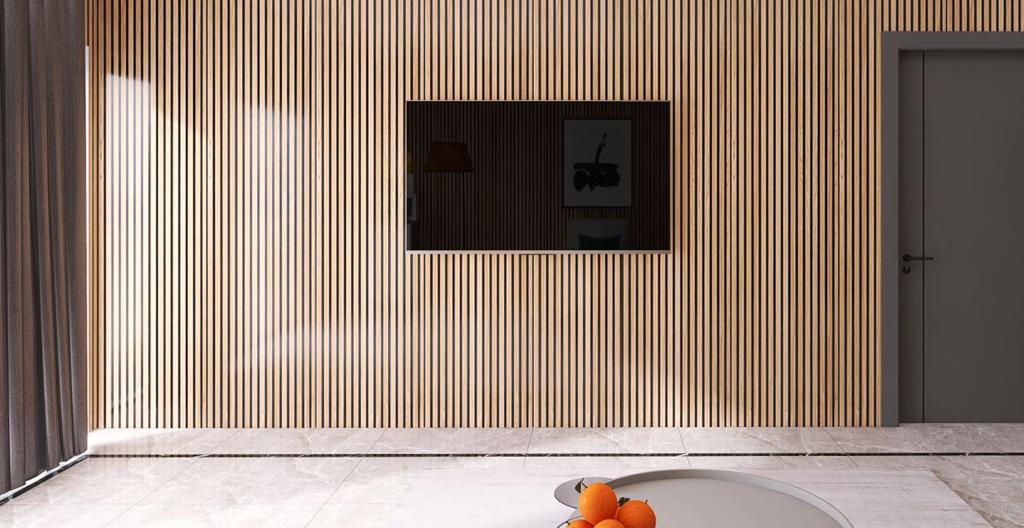When it comes to home décor and interior design, the term “Slat Walls” often stands out due to its modern and versatile appeal. However, many people may not be aware that there are several alternative names for slat walls, each offering a slightly different nuance or context. Understanding these alternatives can help homeowners, DIY enthusiasts, and professionals communicate more effectively and explore a broader range of design possibilities. This blog dives into popular alternative names for slat walls, their uses, and what makes each term unique.
1. Paneling
Paneling is one of the most commonly used terms to describe slat walls. This general term refers to any kind of decorative or functional wall covering that includes thin or wide vertical or horizontal strips.
- Characteristics of Paneling:
- Typically wooden, but can be made from other materials such as MDF or composite.
- Offers a timeless, classic look suitable for a range of spaces from living rooms to offices.
- Often used to create texture and depth in a room.
Why Use This Term?: Homeowners often use “paneling” interchangeably with slat walls, as both serve to add a structured and appealing element to interior walls.
2. Wooden Wall Panels
The term Wooden Wall Panels captures a specific type of slat wall that is made entirely of wood.
- Features:
- Provides a natural, warm aesthetic.
- Can be stained or painted to match any interior design theme.
- Ideal for both modern and rustic settings.
Applications: Wooden wall panels are perfect for creating accent walls in living rooms or hallways and can also be used in commercial settings for a high-end appearance.
3. Tongue and Groove Panels
Tongue and Groove Panels are another alternative name for slat walls, highlighting the interlocking feature that ensures seamless installation.
- Key Benefits:
- Easy to install due to the tongue and groove system.
- Creates a neat, continuous appearance with no visible seams.
Common Uses: These panels are popular in cottage-style homes, bathrooms, and kitchens, where a tighter, more cohesive look is desired.
4. Wall Battens
Wall Battens refer to vertical strips of wood or other materials that can be used as slat walls. This term emphasizes the construction process and the narrow strips involved.
- Advantages:
- Provides a striking linear aesthetic.
- Can be spaced out for a more open, modern feel or placed close together for added privacy.
Ideal For: Wall battens are widely used in foyers, dining rooms, and exterior facades for an upscale, textured appearance.
5. Cladding
The term Cladding is often associated with external walls, but it is equally applicable for interior slat wall applications.
- Features:
- Often used for both protective and decorative purposes.
- Can be crafted from wood, composite, or metal materials.
Best For: Cladding is great for adding a statement piece to an interior wall while maintaining the structural integrity of a space. It’s especially popular in modern and industrial-style homes.
6. Shiplap
Shiplap is a trending term that many homeowners and designers use synonymously with slat walls, even though there are slight differences.
- Characteristics:
- Features a rabbeted edge that overlaps to create a tight seal.
- Typically horizontal but can be installed vertically for a unique effect.
Why Choose Shiplap?: Shiplap offers a clean and charming aesthetic, making it ideal for farmhouse-style homes, entryways, and bedrooms.
7. Decorative Wall Panels
Decorative Wall Panels serve as an umbrella term for slat walls that are used to create visual interest.
- Key Points:
- Available in various textures, finishes, and patterns.
- Offers flexibility in achieving different styles, from minimalist to ornate.
Perfect For: Decorative wall panels are highly versatile and can be used in living rooms, offices, or commercial spaces to enhance the overall ambiance.
Examples and Comparisons
To better understand the distinctions between these terms, here’s a quick visual comparison:
Key Differences Among Slat Wall Alternatives
| Name | Material | Installation Style | Common Use Cases |
|---|---|---|---|
| Paneling | Wood, MDF | Horizontal/Vertical strips | Living rooms, offices |
| Wooden Wall Panels | Wood | Horizontal/Vertical | Accent walls, hallways |
| Tongue and Groove | Wood, composite | Interlocking, seamless | Bathrooms, kitchens |
| Wall Battens | Wood, metal | Vertical strips | Foyers, dining rooms |
| Cladding | Composite, metal | Attached over surface | Modern and industrial interiors |
| Shiplap | Wood | Overlapping horizontal panels | Farmhouse-style spaces |
| Decorative Wall Panels | Wood, MDF, composite | Varies | Commercial, modern homes |
Conclusion and FAQs
Understanding the various names and nuances of slat walls helps you choose the perfect solution for your home or project. Below are some frequently asked questions that might help you decide:
1. What is the main benefit of using wall battens?
Wall battens provide a structured, textured appearance that adds depth and modern elegance to any space.
2. Can shiplap be used interchangeably with slat walls?
Yes, although shiplap typically features overlapping panels, it can achieve a similar aesthetic when installed vertically.
3. Are tongue and groove panels suitable for bathrooms?
Absolutely! Their seamless design and tight fit make them ideal for spaces with higher moisture levels.
4. What’s the best material for decorative wall panels?
Wood is a popular choice, but MDF and composite materials also offer durability and a range of finishes.
5. How do I choose between paneling and cladding?
Choose paneling for a traditional, versatile look and cladding for a more industrial, protective function.
With these insights, you’re now well-equipped to choose the best slat wall alternative for your next interior design project.








